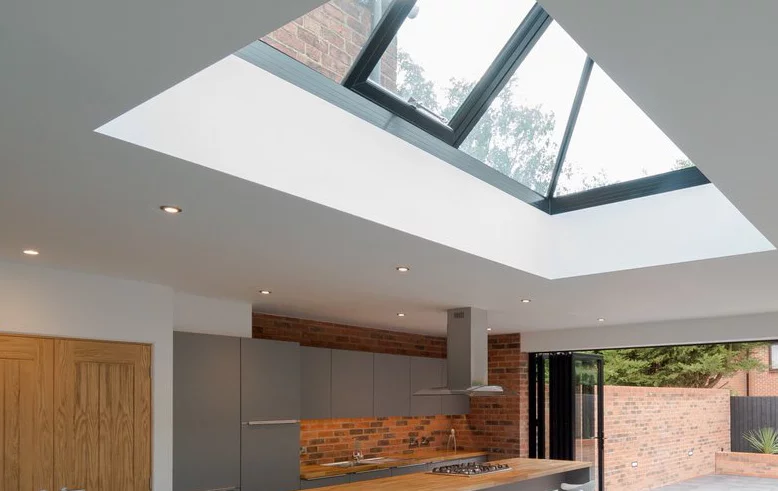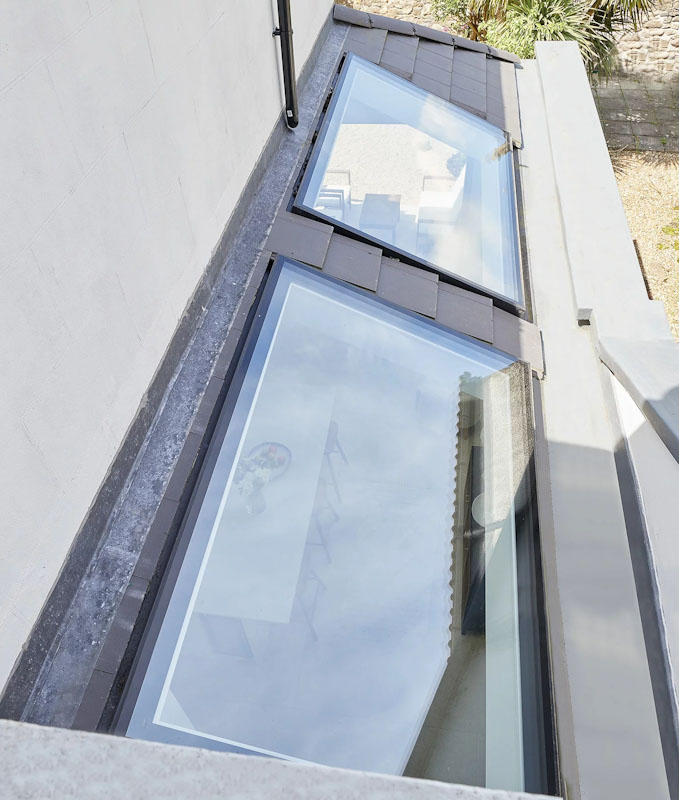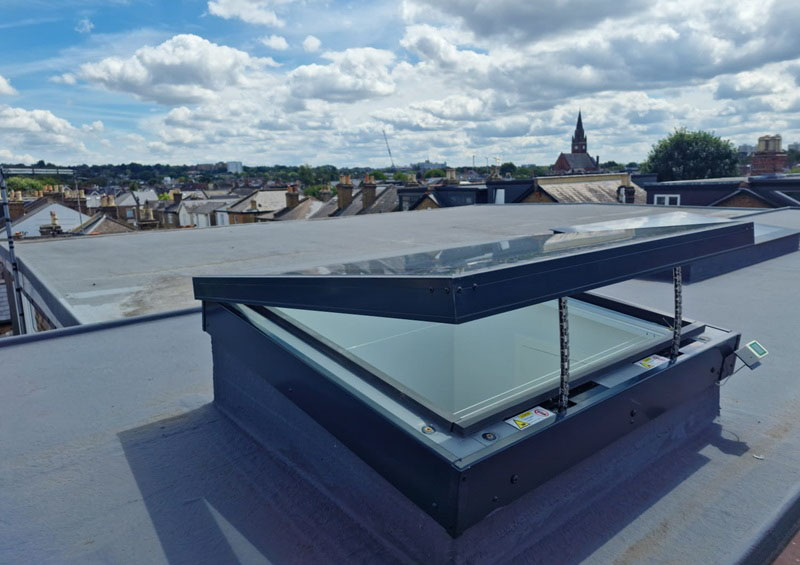Rooflights, like any other part of your home, can weather over time. Rain, sunshine, dirt, dust, and regular use can wear down over time. This can cause bigger issues too, if you don’t sort it sooner rather than later. Especially, when rooflights like Roof Maker’s are designed to last 30 years with proper care and maintenance.
Join us as we look at what signs to look out for when your rooflights are tired and what windows you should look to invest in for longevity and performance.
What causes wear and tear of rooflights?
There are three main areas of concern. Environmental factors, poor maintenance, and installation issues are where you can expect to find common problems or compromised performance.
With environmental factors, extreme weather like hail and extreme changes in temperature, long-term UV exposure, accumulating dirt, and condensation can slowly degrade components and compromise your rooflights.
Poor maintenance (such as regular cleaning) and a failure to remove dirt and debris, or fix smaller issues, can also lead to general wear and tear. This goes hand in hand with the type of window you choose. Generally, more advanced windows feature the latest technology and are designed to last longer, featuring advanced glazing and protective films.
Finally, installation issues can set you up for failure, so ensure you work with a reliable and professional installer, particularly wherever flashing is required.

What issues should I look out for?
Luckily, noticing wear and tear is easy with a range of physical signs that are simple to identify.
Leaks: Leaks are one of the easiest ways to spot issues in your skylights. If you find water stains below windows, drips when it’s raining, or puddles forming, then there is a good chance your rooflight requires replacing, or at least repairing.
Condensation: Another issue you may come across is condensation. This can occur when seals have worn and the window no longer performs to a high standard. Look out for droplets on the glass pane or mildew buildup. If you have skylights that open, consider regularly opening them to reduce condensation.
* Choosing advanced rooflights can also combat this, as some windows (like Roof Maker’s) come standard with integrated glazing units (IGUs) that sit 80% deeper than industry standards. This combats temperature differences with warm-edge spacer bars that minimise thermal bridging and enhance overall insulation. Each unit is also filled with insulating gas to reduce heat transfer. For more information, read our helpful guide here.
The result is a rooflight that not only delivers striking aesthetics but also plays a key role in improving your home’s energy performance, reducing heat loss in winter, preventing overheating in summer, and helping to lower energy costs throughout the year.
Fogginess: Fogginess is especially prevalent on glass panes in winter when the difference between the outdoor and indoor temperatures is highest. If your glass looks foggy, it could mean your skylight seals or glass pane finishes have worn and may need replacing.
Cracks & Chips: This is one of the more obvious issues, but if you see cracks or chips in the glass, it may be time to replace your skylight, roof lantern, or window. Glass technology requires every layer to perform, so any cracks or chips may compromise even the most advanced glazing.
Discolouration: Discolouration is most obvious in the frames surrounding the window with handles, frames, and other components wearing from exposure to harmful UV rays. Over time, this can degrade your window and lead to energy loss and water ingress.
Rust & Corrosion: Rust can affect many metal components; from the frame to handles to screws. Metal frames are especially susceptible to rain, snow and standing water, so make sure to check your windows regularly and keep them clean and tidy.


Fortunately, this issue is only one to worry about if you have older windows, as a high-quality, modern rooflight should combat this issue with aluminium frames to prevent rust from forming in the first place.
Our windows, for example, all feature marine-grade, powder-coated aluminium frames to prevent this from occurring, allowing you to enjoy your home even in a country as rainy as England.
As an aside, timber frames can also be susceptible to the above issues. For this, we have a dedicated blog to help you understand how to remove or replace wooden rooflights here.
Work with Roof Maker today
At Roof Maker, we have years of experience improving homes, commercial properties, and more with our range of rooflights and lanterns. If you’re interested in replacing old roof lights or want to install new ones, contact our team today. We’re on hand to turn tired rooflights into sunny expanses that brighten your home, and let the light (not water) in.


Old Rooflight FAQs
What is the average lifespan of a skylight?
With proper care, a rooflight can last over a decade (and even several). The longevity of a skylight depends on a combination of care and general wear and tear. Stick to regular maintenance, and you’ll ensure your windows last as long as possible.
How often should a skylight be cleaned?
Skylights are designed for minimal care. Due to their placement in high, out-of-reach places, they only require cleaning twice a year. If possible and accessible, then feel free to clean them more often. When doing so, focus on removing any dust or dirt buildup and always ensure you use non-abrasive materials and cleaning agents.
How often should a skylight be replaced?
The performance of rooflights varies greatly, but as a rule of thumb, you should replace your rooflight when it fails and shows signs of damage. This usually occurs between 10-30 years of use.
Where do skylights fail?
Rooflights fail where there is an opportunity for dirt and water to build up or find ingress. As such, edges, seams, flashing, and skylight seals are often the first places to be damaged.
Do skylights need ventilation?
Skylights can benefit from regular ventilation as this allows air to circulate. This also improves indoor air quality and helps with temperature regulation and moisture control.
Do you need flashing around a skylight?
Yes, flashing is an essential part of window construction. Flashing helps create a watertight seal between your roof and your window, ensuring your roof and window don’t leak.
